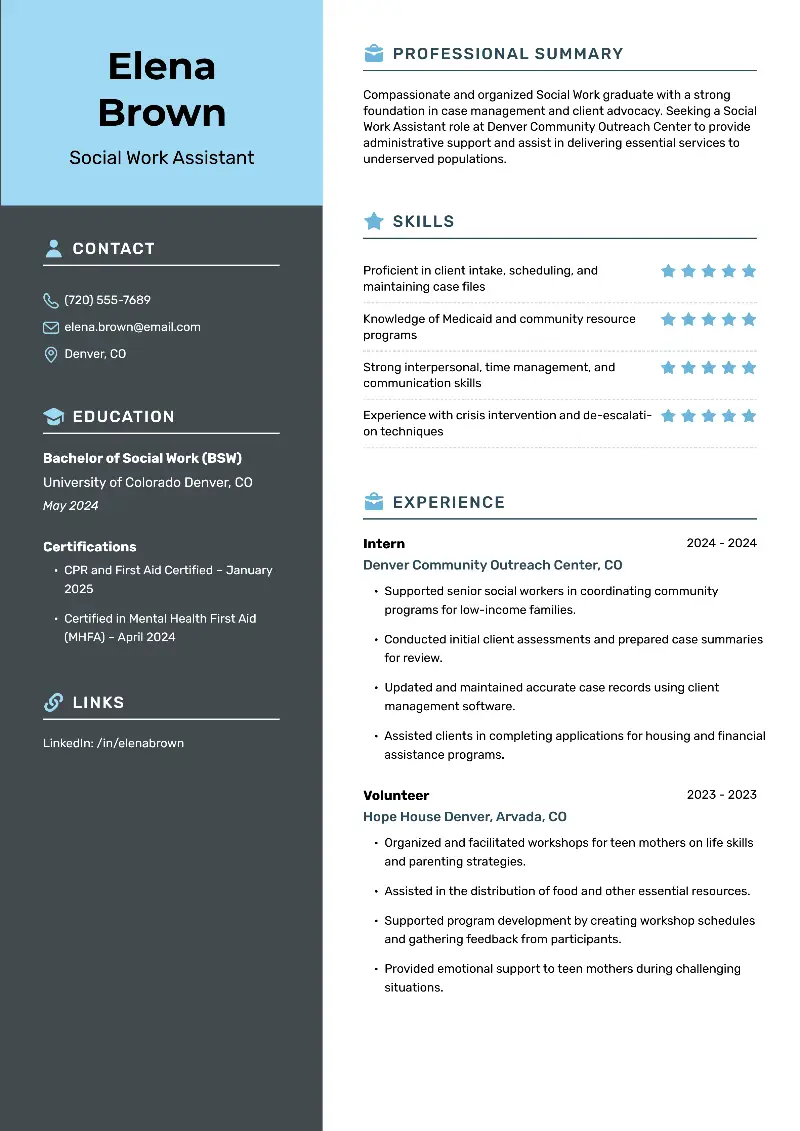In the world of beauty and skincare, achieving a high level of professional expertise is essential for those aiming to make a mark in the industry.
Esthetician certification serves as a pivotal step in this journey, equipping practitioners with the skills and credentials necessary to excel in their field. This certification not only validates proficiency but also opens doors to a range of career opportunities and growth.
In this guide, we’ll delve into what it takes to earn your certification, the various paths available, and how this qualification can elevate your career in the dynamic world of esthetics.
List of beauty esthetician certifications
1. National Esthetician Certification
$200 - $350
The National Esthetician Certification is a credential that recognizes an individual's proficiency in various aspects of skincare, from basic treatments to advanced procedures. It is designed to set a standardized benchmark of excellence across the industry and is often seen as a mark of credibility.
Issuing authority:
- National Coalition of Estheticians, Manufacturers/Distributors & Associations (NCEA)
- National Esthetician Certification Board (NECB)
- International Association for Skin Care Professionals (IASCP)
The esthetician credential is recognized across the United States and can enhance job prospects in diverse settings, including salons, spas, medical offices, and wellness centers. It requires renewal every 2-4 years, depending on the issuing organization’s requirements.
How to get this certification for esthetician
- Approximately 50-100 hours of additional training beyond basic esthetician education. This includes both theoretical knowledge and hands-on practice.
- Candidates generally need several months to prepare for the certification exam, depending on their prior experience and knowledge.
Requirements:
- Must hold a valid state esthetician license or equivalent professional certificate.
- Completion of an accredited esthetician program with a specified number of training hours.
- Often requires a certain amount of practical background in the field, typically ranging from 1-3 years.
Best for:
- Those with several years of experience who wish to validate their high paying skills on a national level and stand out in a competitive job market.
- Professionals looking to transition into esthetics from other fields and seeking a recognized standard of excellence.
- Estheticians who want to work in high-end settings where advanced certification is valued.
- Specialists who have their own skincare practice, as the esthetics licensure can lend credibility and attract clients seeking top-tier services.
2. Certified Medical Esthetician
$1,000 - $2,500
This aesthetics licensure is geared towards estheticians who wish to specialize in medical settings, healthcare, providing advanced skincare treatments under the supervision of a medical professional.
Issuing authority:
- National Coalition of Estheticians
- Manufacturers/Distributors & Associations (NCEA)
Recognized in medical and high-end spa environments; may require renewal every few years.
Conditions of getting this certification
- Generally involves 300-600 hours of advanced coursework and hands-on training beyond basic education.
Requirements:
- Possess a valid state cosmetology or equivalent skincare certification.
- Additional training in medical esthetics is necessary.
- Typically requires 1-3 years of experience in a clinical setting.
Best for:
- Those who work in dermatology clinics, plastic surgery offices, or other healthcare environments.
- Estheticians seeking to specialize in technologies that are used in conjunction with medical procedures.
- Specialists who want to collaborate more effectively with hospital professionals and nursing staff.
3. Certified Spa Therapist
$150 - $300
This esthetician training signifies expertise in a range of spa services, including massage therapy, body treatments, and holistic wellness practices.
Issuing authority:
- International Spa Association (ISPA)
- American Massage Therapy Association (AMTA)
- National Certification Board for Therapeutic Massage & Bodywork (NCBTMB)
This aesthetics licensure enhances professional credibility and may be required for certain positions. Certification requires renewal every 2-4 years, depending on the issuing body’s policies.
Conditions of getting spa certification
- Involves 200-400 hours of esthetician training beyond basic spa education.
Requirements:
- Applicants need a valid state license in esthetics, depending on their focus area.
- Completion of a foundational spa or massage therapy program.
Best for:
- Individuals seeking to build a career in upscale or luxury spa settings.
- Professionals aiming to formalize their expertise and enhance their qualifications.
- Those who want to integrate holistic and therapeutic approaches into their spa services.
4. Certified Microblading Artist
$1,200 - $3,500
This training for esthetician signifies proficiency in the microblading technique, which involves using a handheld tool to implant pigment into the skin, creating the appearance of fuller, more defined eyebrows.
Issuing authority:
- Microblading Academy, Brow Design International, or similar specialized training centers
- NYC Department of Health and Mental Hygiene (DoHMH)
The certification is recognized in the beauty industry for its rigorous standards. It needs to be renewed every 1-2 years.
Conditions of becoming certified esthetician
- 20-40 hours of intensive training, which includes both theoretical instruction and practical hands-on practice.
Requirements:
- In many states, a specific esthetician license is not required.
- Enrollment and completion of a microblading training program that includes theory, technique, and sanitation practices.
- Real-life practice is crucial, and many programs include a certain number of model hours to ensure practical experience.
- Adherence to local health regulations, which may include passing a safety course.
Best for:
- Those specifically interested in pursuing a career in eyebrow tattooing.
- Professionals already working in the sphere who want to add microblading to their skill set.
5. Certified Eyelash Extension Technician
$500 - $1,500
This esthetician credential signifies that a professional has mastered the skills necessary for applying eyelash extensions. This includes understanding lash types, and ensuring proper care and safety protocols to achieve desired results.
Issuing authority:
- Lash & Brow Academy, Xtreme Lashes, or Bella Lash
- National Association of Lash Artists (NALA)
- International Association of Eyelash Extensions (IAEE)
Depending on the organization, renewal may be required every 1-2 years.
Conditions of becoming certified esthetician
- 20-60 hours of training, the length can vary depending on the depth of the course and the number of techniques covered.
Requirements:
- Many states do not require a specific esthetician license.
- Completion of a lash extension training program that emphasizes product knowledge.
- Many programs require a certain number of modeling hours for real-world learning.
- Comply with local health regulations, including completion of a basic hygiene course.
Best for:
- Individuals with a background in esthetics, cosmetology, or beauty who wish to specialize in eyelash extensions.
- Business owners who want to offer eyelash extension services at their establishments.
How to put certifications for estheticians on a resume?
Dedicated certifications section
Having a separate section in resume makes it easy for employers to find and verify your credentials.
What to write:
- Certification name. Use the official title of the aesthetics licensure.
- Issuing organization. Mention the organization or institution that awarded the esthetician certification.
- Date. Include the year (and month, if applicable) when you obtained the training. Note the renewal period.
Example:
Certified Medical Esthetician, 2023
National Coalition of Estheticians
- Renewal date: 2025
Professional experience section
Incorporate esthetician training within your job descriptions to demonstrate how they are applied in your work.
Example:
Esthetician
Glow Spa & Wellness Center, New York, NY, June 2022 – Present
- Delivered advanced skincare treatments such as chemical peels and microdermabrasion.
- Applied precision microblading techniques as a Certified Microblading Artist, achieving high client satisfaction and repeat business.
Summary
In the resume summary or objective section, briefly highlight your certifications to quickly communicate your qualifications.
Example:
Dedicated and skilled Esthetician with a comprehensive background in skincare and beauty treatments. Expertise includes advanced techniques in facials, chemical peels, microdermabrasion, and body treatments. Holds a state license as a professional Esthetician, and is certified in Advanced Facial Techniques. Proven ability to create a welcoming environment and deliver exceptional customer service.
Ensure that the same certification isn’t listed multiple times or in several resume parts unless it’s necessary for clarity.
FAQ
- What is the difference between esthetician certification and licensing?
- In many states, the terms are used interchangeably. However, licensing is typically required to legally work as an esthetician. Certification may refer to additional specialized credentials.
- Is esthetician certification required in all states?
- Yes, most states in the U.S. need estheticians to be licensed to practice professionally. The specific requirements vary by state, so it's important to check the regulations of the place where you intend to work.
Create your professional Resume in 10 minutes for FREE
Build My Resume
Conclusion
In the ever-evolving field of esthetics, professional certifications play a pivotal role in defining career success and maintaining industry standards.
As you navigate the path of licensed esthetician, it’s crucial to choose programs and credentials that align with your career goals and aspirations. By investing in your professional development through certifications, you not only enhance your skill set but also contribute to the advancement within the beauty industry.



